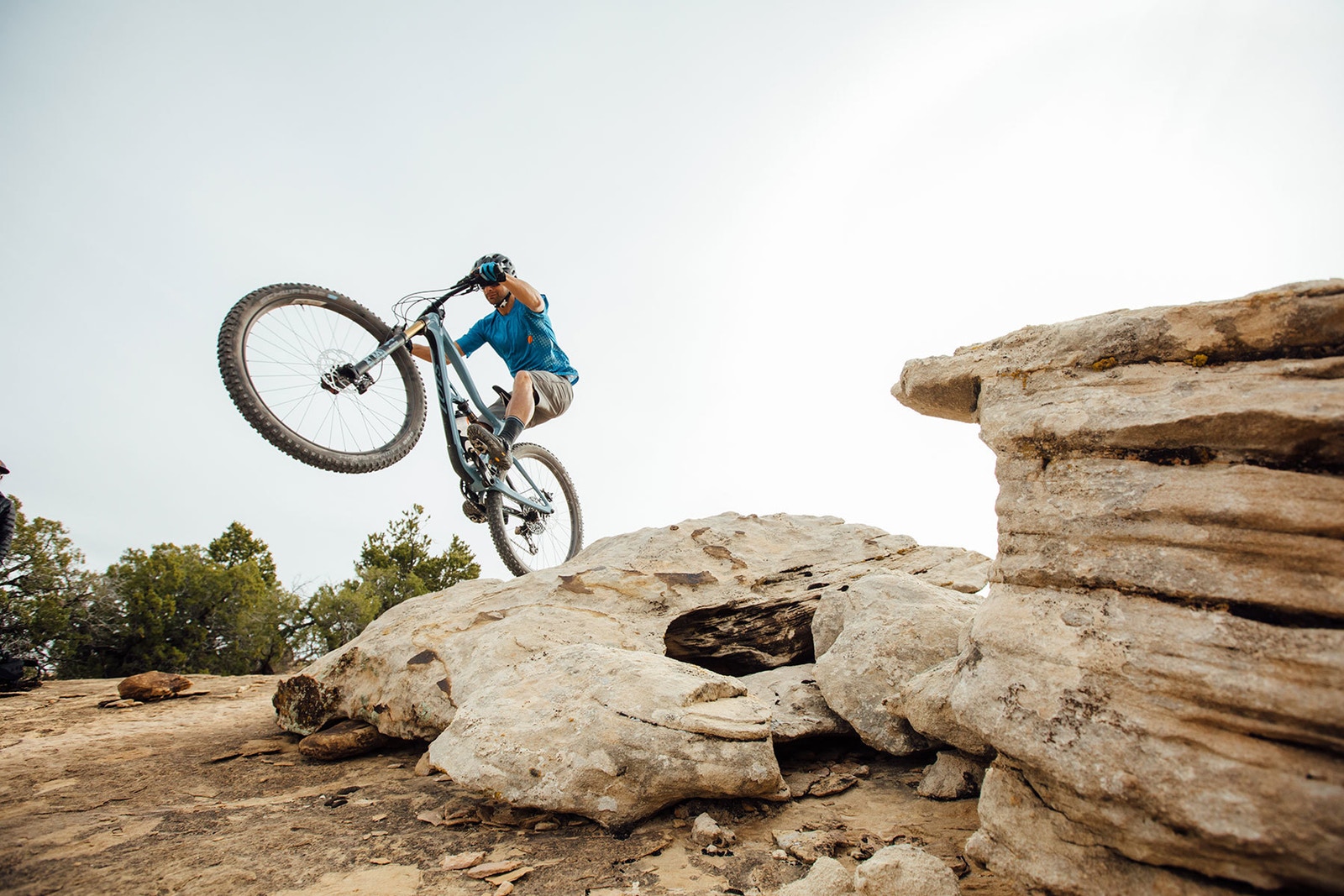Suspension includes you and the bike
Suspension is a system not merely limited to your fork and shock

Suspension is a vital differentiation between road and mountain bikes. But are we mistaken in considering forks and shocks as the only suspension components at our disposal?
With geometry trends and suspension technology having advanced enormously in the last few years, mountain bikes are now easier to ride fast and with confidence, on even the most technical trails.
Significant advances in linkage kinematics have enabled us to ride longer-travel bikes which aren’t horrible to climb.
A competitive market and obsessive designers have delivered bikes which are now better than ever, but could there be a great deal of latent performance that you are not extracting form your brilliant new dual-suspension mountain bike?
Don't become a passive passenger
If you consider the average weight of a new dual-suspension mountain bike, it is between 12- and 15kg. Compare that to its rider, who is between 70- and 100kg, and there is obviously a huge discrepancy.
A typical rider is approximately 600 per cent of a mountain bike’s mass. That means when your bike is being jumped, ridden off a drop or pinged through a wild rock garden, the most significant factor influencing its stability is rider weight – and how that mass is being distributed.
As the sport’s grown and absorbed a greater diversity of participants, the range of rider physiologies on mountain bikes has become hugely varied. And the issue is that you remain the most significant element of bike balance and descending speed – in your fit, and movement, on the mountain bike.
If the average trail bike has 120mm of travel, which is very confidence inspiring with 2019 suspension components and geometry, what would happen if you could add meaningfully to that amount of suspension? Even better, imagine you could add additional suspension travel on demand. The answer is: you can. And it doesn’t cost anything.
Biological suspension is important
The obvious but often ignored truth is that every single rider possesses a great amount of unused suspension capability each time they are out riding: and it is their own physiology.
If you go into a power-squat position and compare that to your usual riding posture, you’ll notice there is a lot more than 120mm of vertical difference. And that is just the unused suspension travel available in your legs.
Sit on your bike, grab the grips and lean forward into a lower position, with your chest nearly over the steering tube top-cap. If you hit a big feature with the front wheel, your fork will absorb most of the impact, but if your arms are active too, working as two additional linkages, you can nearly double your available suspension travel.
The least stable riding position, when navigating technical terrain features or attempting a high-speed descent, is sitting in a bolt upright posture. You have no margin to trigger additional physiological suspension travel or absorb more terrain with either your arms or legs.
By investing some time and effort in strength training and flexibility you’ll be a lot more active on the bike and unlock the latent physiological suspension potential in yourself. If you use a dropper seatpost on your bike, which will create the room to get lower and use your leg and arm suspension, there is tremendous potential waiting to be uncovered.
Having your weight more centred, pressuring the front wheel, is where cornering speed and traction is generated. And the only way to get into a better and more regular habit of doing that, is to envision and apply yourself as an integral and adjustable part of your mountain bike’s suspension system.

Lance Branquinho is a Namibian-born journalist who graduated to mountain biking after injuries curtailed his trail running. He has a weakness for British steel hardtails, especially those which only run a single gear. As well as Bike Perfect, Lance has written for MBR.com, Off-Road.cc and Cycling News.
